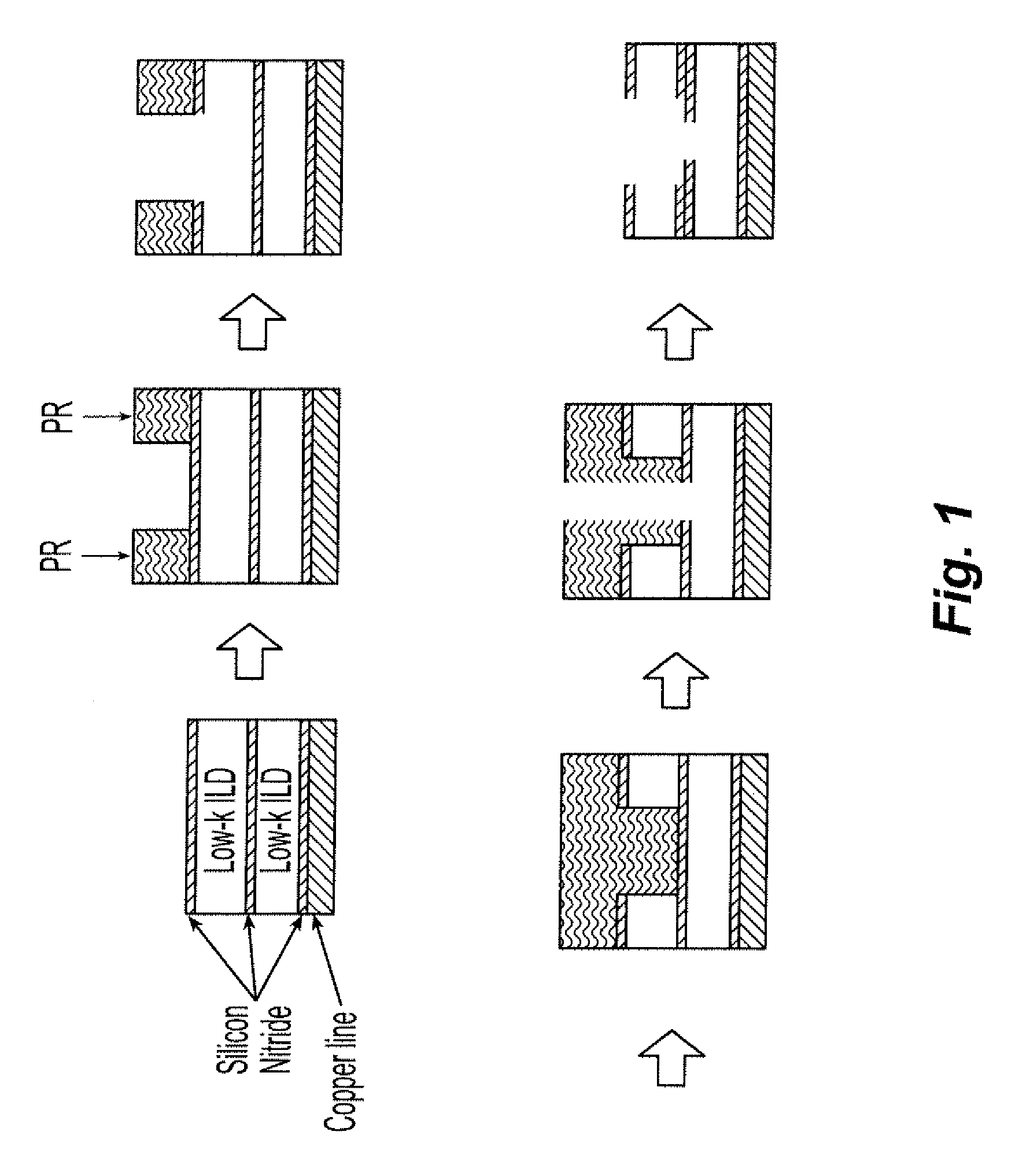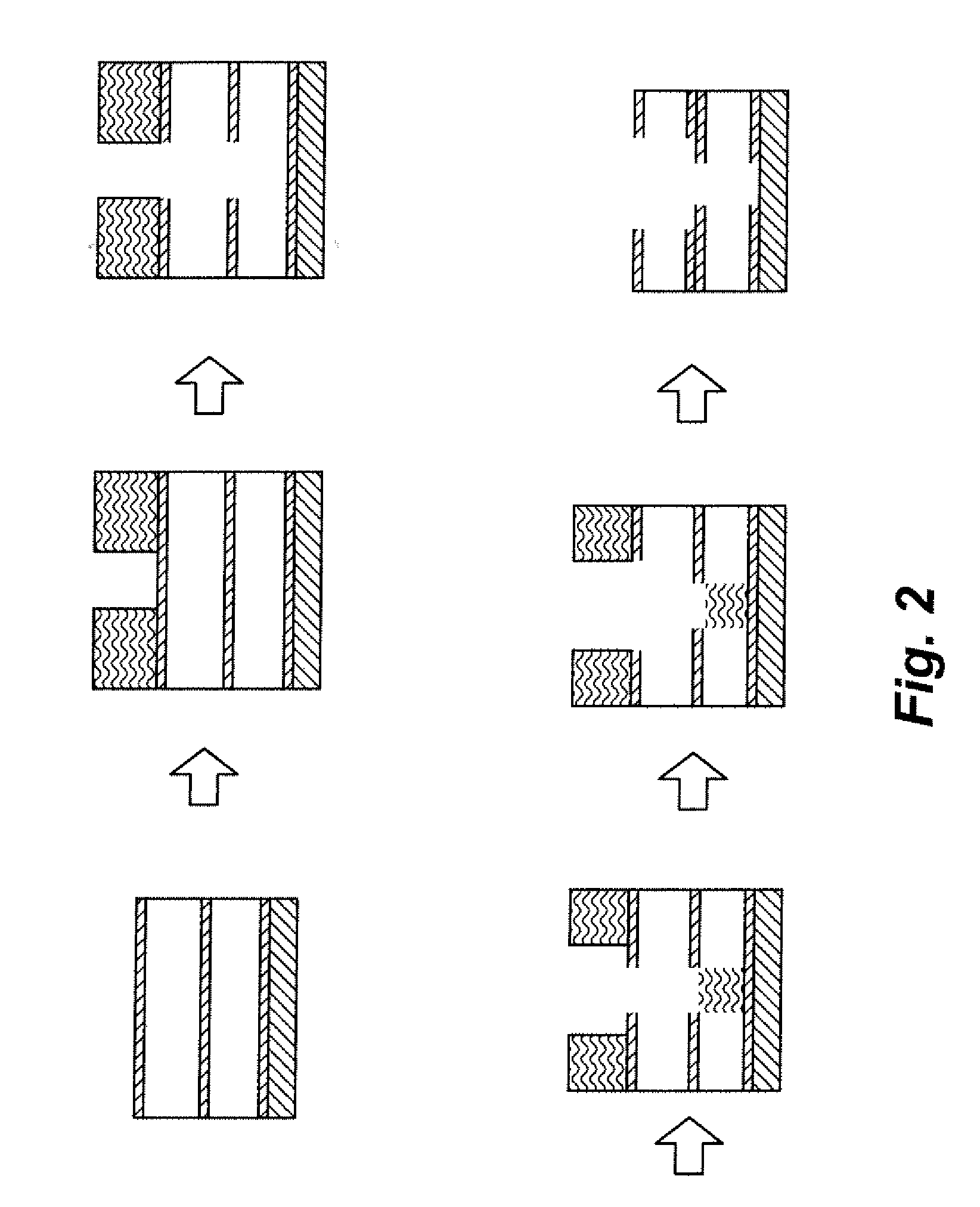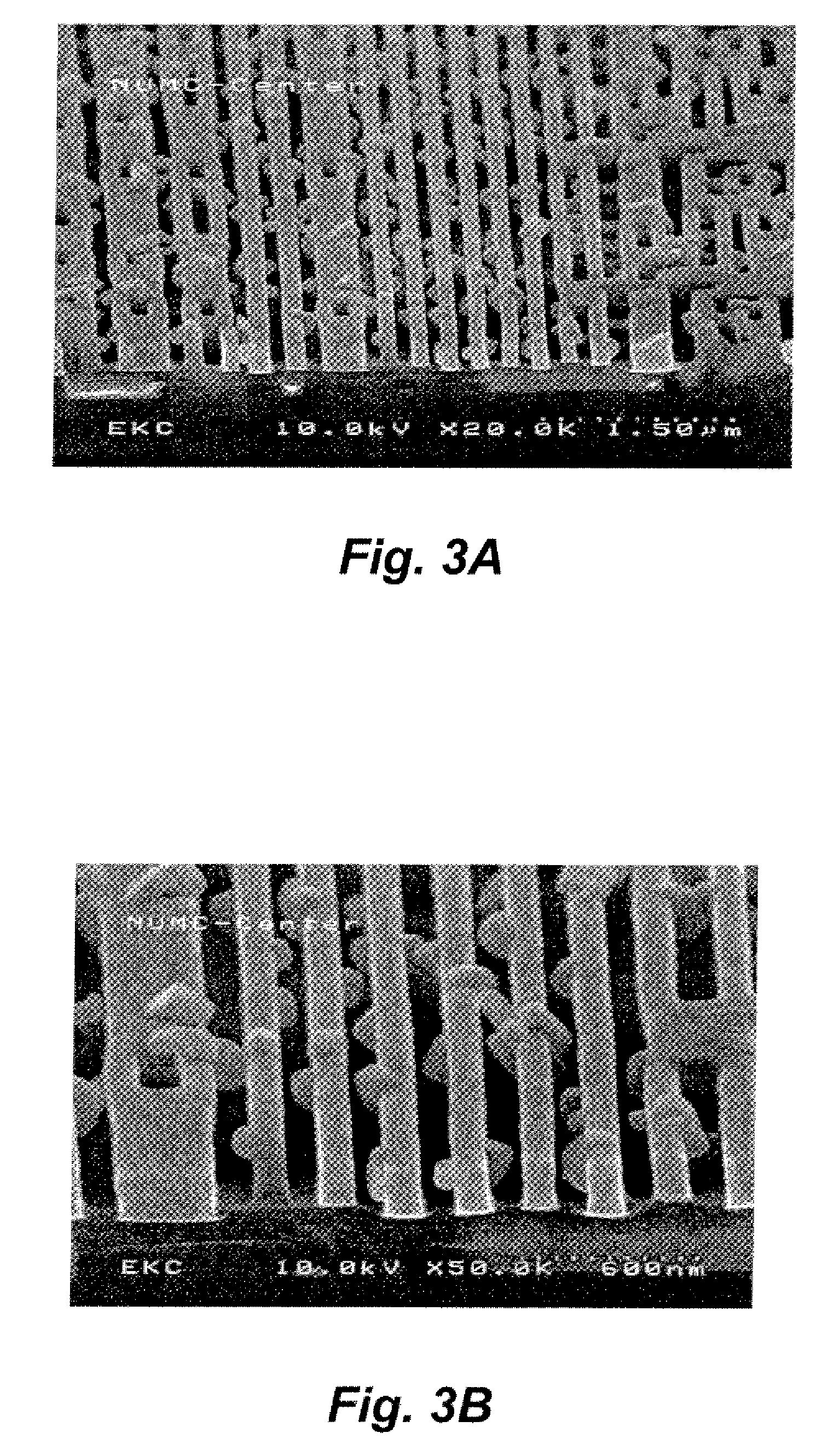The introduction and integration of
new materials, such as metal
hard mask, creates additional requirements for
wafer cleaning due to the occurrence of new defect
modes related to metal hard
mask.
The electrical
resist and
parasitic capacitance associated with these metal interconnections have become a major factor that limits the circuit speed of such high performance ICs.
The transition to porous low-k dielectrics, combined with
copper metallization, poses a significant
integration problem for the dual damascene process.
However, this methodology, and other aspects of the dual damascene process, particularly barrier materials, may be forced to undergo a revision as the unique and frequently fragile properties of low-k dielectrics are taken into consideration.
Because
copper does not form a volatile by-product, it is very difficult to etch, and therefore
copper metallization schemes cannot be realized using the traditional subtractive etching approach used to form
aluminum metal lines.
A key issue here are which of the two etches in the dual damascene process, the via etch or the trench etch, should be performed first, and how to select an appropriate barrier material.
The major drawback of the trench-first approach is that after the trench is etched, the
photoresist applied for the via step will completely fill these trenches (see FIG. 1).
Forming the very fine via structures in such strong resist is extremely difficult, and the
processing margin for via formation becomes untenable within limited geometries.
The copper will then quickly diffuse into the ILD, causing the failure of the device.
Although the via-first approach has been very successful for dual damascene implementation in
silicon dioxide, fluorinated
silicate glass (FSG), and some early versions of low-k materials, it faces a severe challenge when used with ultra low-k materials.
However, the
highly porous nature of ultra low-k dielectrics may cause further
contamination and alteration of its k value because of the absorption of this residual
photoresist by the ILD.
This drawback may necessitate the return to a modified trench-first approach to the dual damascene fabrication.
However, even this approach is at risk, because the trench-first approach
photoresist pools in the open trench structure prior to via patterning (FIG. 1).
Further problems concerning ultra low-k dielectrics arise with regard to CMP.
However, as the industry drives toward lower and lower ILD k values, the
permittivity of
silicon nitride (6<k<8) becomes unacceptable.
Its relatively high
permittivity undesirably raises the overall
permittivity of the ILD stack, compromising the stack's ability to mitigate electrical
delay.
This issue is further challenged by the undetermined character of the ILD material to be used for future devices.
In particular, the proliferation of low-k materials is a major obstacle to resolving the dual damascene / low-k
integration problem.
Second, the
wafer is ashed, exposing the remaining metal.
The main challenge of etching a metal hard
mask is that the byproducts have a low volatility and the resulting post etch residues are far more difficult to remove than with non-metal hard masks. FIG. 3A and FIG. 3B illustrate the residues remaining on the
substrate surface after patterning processes.
During etch and / or ash
processing, the
low k dielectric materials are damaged by depleting the carbon contents in the low k dielectrics.
Therefore, a simple combination of solvents will often remove resists, though time and temperature constraints in the manufacturing process have in general moved the industry to slightly more aggressive compounds.
Etching residue not removed from the substrate can interfere with subsequent processes involving the substrate.
The effect of poor cleaning results in low device yield, low device reliability, and low device performance.
The substrate is often contaminated from previous process steps with
monolayer amounts of metal, anions and / or organic contaminants or surface residues (particles).
However, such formulations are not effective at removing etching residues where a metal hard
mask is involved.
However, such formulations are not effective at removing etching residues where a metal hard mask is involved.
However, such formulations are not effective at removing etching residues where a metal hard mask is involved.
Such formulations are also ineffective at removing etching residues where a metal hard mask is involved.
Similarly, such formulations have been found not to be effective where a metal hard mask is involved.
However, such formulations are not effective in removing metal hard mask residues.
Processing conditions are often quite different from one fabrication process to another, making it difficult to apply a particular composition to obtain both effective residue removal and substrate compatibility.
For example, some compositions have produced
corrosion on certain metal substrates, such as those including a
titanium metal layer.
Used in such a capacity, the layer is often very thin, and
corrosion or etching during cleaning operations may compromise the purpose of the layer.
Thus, the quality of the metal
interconnection structure filled in the damascene openings is greatly degraded to decrease the yield of product significantly.
This is due to residues from the metal hard mask.
 Login to View More
Login to View More 


